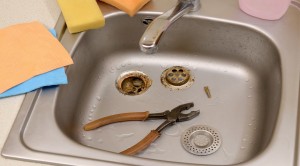With drain pipe relining, outmoded pipelines get the CPR they need to keep going strong—banishing those pesky plumbing woes for good. Pipe problems vanish when we fix them from the inside out, skipping the mess of digging up your yard.
When it’s all said and done, homeowners can breathe a sigh of relief knowing that this process kept their lives largely uninterrupted and the fixes will still be solid years down the road. Maintenance becomes a whole lot easier, with none of the headaches that come with ripping up entire yards or sections of walls.
To get a clear picture, let’s weigh the pros, spell out the steps, and stack them up against old methods. Drain pipe relining reveals itself not just as an alternative but as an evolution in plumbing repair techniques.
Exploring Drain Pipe Relining Benefits
Drain pipe relining is a contemporary fix for aged plumbing systems. It adapts to pipes’ specifics, ensuring an impeccable seal against potential leaks and fractures. This method notably extends PVC pipes’ lives by adding a resistant inner layer that guards against normal deterioration.
For homeowners, drain pipe relining equates to cost-saving maintenance compared to full replacements. A far less invasive approach indeed. Addressing metal pipes in older estates, this technology imbues them with enhanced durability; it effectively combats corrosion and strengthens structure.
Vital factors considering their vulnerability over time. Metal piping benefits from a protective liner during the process that wards off moisture-induced rust for years on end while also preventing leakages thanks to its leak-proof sealing capabilities. The technique employs robust liners tailored snugly within existing structures, offering assured protection from root encroachment and cracks.
Current imperfections are resolved seamlessly without excavation disturbances or excess costs typically associated with replacement versus relining.
The Relining Process Simplified
Drain pipe relining, formally known as cured-in-place piping or CIPP, stands out for its trenchless approach to repairing pipes. Fundamentally transformative, this process begins with a thorough camera inspection and cleansing of the existing pipeline. A resin-coated liner then gets carefully inserted into the compromised pipe section.
When positioned accurately over damaged spots, it’s readied for curing via heat or UV light until hardened—a new robust line within an older frame. The benefits are multiplex: property disturbance is starkly diminished; costs saved not only in excavation but also from less need of labor-intensive restoration efforts after traditional digs prove substantial.
This method promises durability that lasts decades without recurrent failings. Making it increasingly preferred by proprietors both residential and commercial. It shines due to minimal ground disruption; reinforcing rather than replacing means waste reduction too. A greener choice indeed! The versatility extends across various pipework materials like clay or PVC.
Comparing Traditional and Modern Methods
Comparing traditional pipe replacement with modern relining reveals stark contrasts. Traditional methods, known for complete renewal, demand rigorous labor and material use. Relining advances a less invasive approach; its trenchless nature avoids extensive excavation damage to landscapes or interiors, often proving more economical in upfront expenditure.
Time investment varies significantly between the two techniques as well. A full-scale replacement can extend over weeks due to its invasive process whereas relining’s efficiency drastically cuts down repair timescales. A compelling advantage for households eager to minimize routine disruptions.
Understanding these opposing implications is critical when deciding on plumbing solutions that align with specific circumstances and budgetary constraints.
Drain pipe relining offers a modern twist on fixing old pipes. Without digging up yards or walls, this method introduces a new liner inside the existing structure. The process starts simple: clean and inspect pipes first.
Then the liners, imbued with resin, cure in place to form solid, seamless pipe-within-a-pipe systems. It’s quick compared to traditional methods and spares homeowners from extensive property damage while extending pipelines’ lives. A savvy choice for those facing plumbing woes who prefer less disruption along with durable repairs provided by companies like Inspect-A-Drain Limited.



